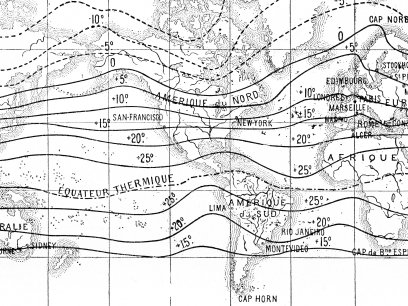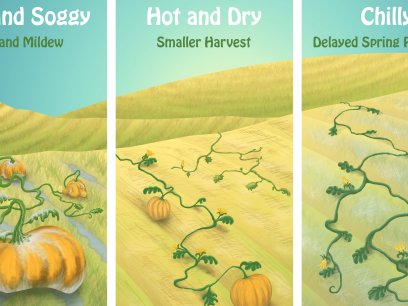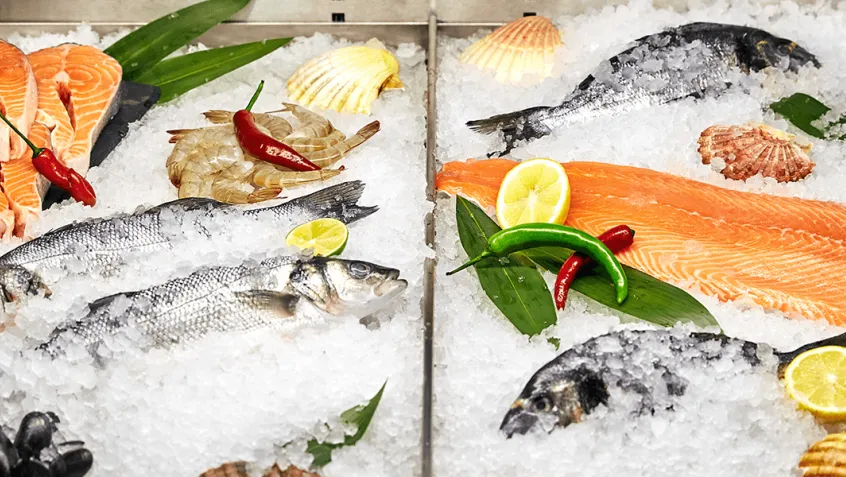
The world’s appetite for fish is growing. The average American ate 19.2 pounds of fish and shellfish in 2019. Do you know where that sushi roll or salmon filet on your plate came from?
The fish we eat gets to the supermarket in one of two ways: commercial fishing or aquaculture. Both can be sustainably harvested, if done properly. In 2019, US fishermen landed 9.3 billion pounds of wild-caught fish valued at $5.5 billion, with Alaska, Louisiana, Washington, Virginia, and Mississippi providing the most fish that year. Farms involved in US aquaculture produced 680 million pounds of seafood worth $1.5 billion in 2018.
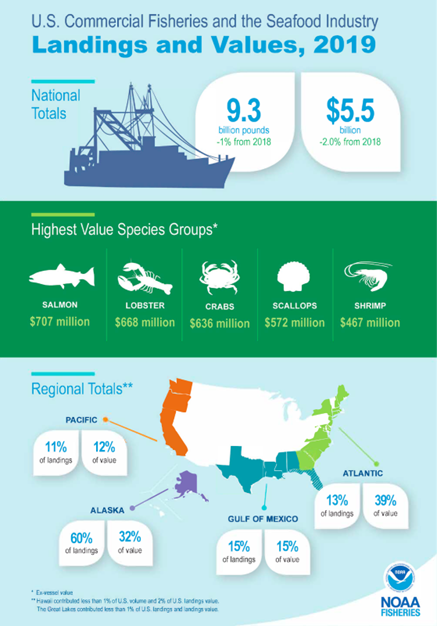
Looking ahead, sustainable aquaculture and fisheries management are needed to meet the world’s growing demand for seafood while protecting the ocean’s natural resources.
“It is critical to use a holistic approach to transform how seafood is fished and farmed because everything is connected,” said Erin Hudson, Seafood Watch Program Director at the Monterey Bay Aquarium. “Collaboration and partnerships with both the public and private sector are the keys to successfully drive change at every point across the seafood supply chain.”
The Ocean-Based Economy
Fish provide nutrition and economic well-being for communities around the world. Billions of people rely on fish for their daily protein. The top seafood species consumed in the US are shrimp, salmon, canned tuna, tilapia, and Alaskan pollock.
In 2018, seven countries—including the US, China, and Indonesia—accounted for almost 50% of the total global wild capture of fish. The most popular fish species caught that year included anchoveta (a type of anchovy), Alaskan pollock, and Skipjack tuna. Here in the US, businesses involved in the ocean economy produce $282 billion in goods and services and employ almost three million people.
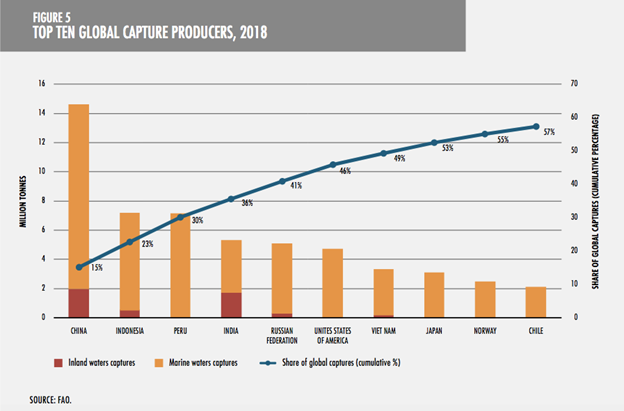
The US is a recognized global leader in sustainable seafood. By law, American seafood must be caught according to fishery management plans that:
- Consider social and economic outcomes for fishing communities
- Prevent overfishing
- Rebuild depleted stocks
- Minimize bycatch and interactions with protected species
- Identify and conserve essential fish habitat
“There are three pillars to sustainability—environmental protection, social responsibility, and economic viability. All three are essential to ensuring that the fisheries and aquaculture we rely on for food and livelihoods thrive into the future,” Hudson said.
Understanding Overfishing and Other Threats
Catching fish is not inherently bad for the ocean, except when fish are caught faster than stocks can replenish, which is the definition of “overfishing.” Declining fish populations can also be the result of other factors including habitat degradation, pollution, climate change, and disease.
Overfishing is also associated with “bycatch”—a serious and complex problem that occurs when unwanted sea life like sea turtles, marine mammals, and seabirds are caught while fishing for a different species.
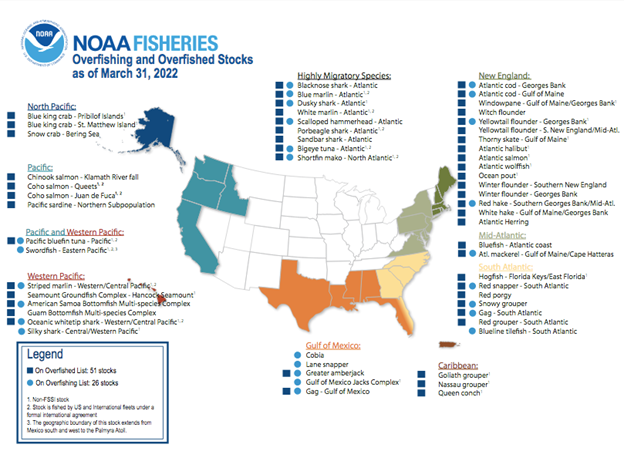
Information is key to finding solutions to overfishing. Assessments like the US National Oceanic and Atmospheric Administration’s (NOAA) Fish Stock Sustainability Index (FSSI) help fishery managers understand the effect of past fishing on the population of a fish species and set annual catch limits that prevent overfishing while supporting sustainable fisheries.
The Food and Agriculture Organization of the United Nations estimates that 78.7% of all wild-caught fish come from biologically sustainable stocks. But in places where good fisheries management is not in place or is ineffective, populations are poor and decreasing. Because up to 85% of both wild-caught and farmed seafood consumed in the US is imported, it is important for Americans to be aware of where the seafood on our plate originates.
What is Sustainable Seafood?
Sustainable seafood is caught or farmed using sustainable fishery management systems that conserve fish stocks and protect the ecosystems that support them. Sustainable seafood is a continuous—and global—journey toward improvement. The conservation and sustainable use of the oceans, seas, and marine resources is one of the United Nations’ Sustainable Development Goals.
You can increase your environmental awareness by learning how to make smart seafood choices using the Monterey Bay Aquarium’s Seafood Watch consumer guides. What began more than 20 years ago as a special exhibit at the aquarium has become a trusted resource for consumers and businesses alike around the globe.
“We define sustainable seafood as seafood from sources that can maintain or increase production without jeopardizing the structure and function of affected ecosystems,” Hudson said. “We determine if a source of seafood is sustainable by assessing the environmental impact of catching or farming it against our standards.”
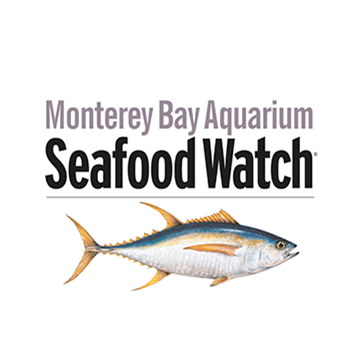
You can download and print the Seafood Watch guides or save them on your phone. The aquarium has distributed more than 63 million printed consumer guides since 1999 and its smartphone apps have been downloaded more than two million times.
Diving Deeper Into Sustainability Standards
Seafood Watch outlines environmental sustainability standards for more than 2,000 types of seafood. The guide provides color-coded recommendations that rate seafood products as “Best Choice,” “Good Alternative,” or “Avoid” based on the environmental sustainability of how it is harvested.
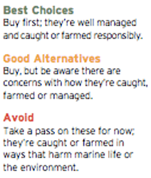
The ratings take into account many different criteria to understand whether a specific type of seafood came from healthy populations or if it is being overfished. Some of the factors that are considered include:
- How is the overall fish population? Is overfishing occurring?
- Is the fishery having an impact on other fish or animals?
- Is it negatively impacting the seafloor?
- How are any of these impacts being managed or mitigated?
- Are farmed species having an impact on wild species in the region?
- Is the farm waste being released into the environment having a negative impact?
- Are large amounts of wild fish being used to feed the farmed fish?
- Are antibiotics and other chemicals being released by the farm having an impact on the environment?
“Since the launch of Seafood Watch, many of the underlying issues around unsustainable fishing and aquaculture practices remain the same: things like overfishing, bycatch, habitat destruction, farmed fish escapes, and the spread of disease and pollution to surrounding environments,” Hudson said. “What has changed, however, is the strategies we use to tackle these complex challenges.”
Today, the aquarium also works with businesses to develop and fulfill sustainable seafood procurement commitments that incentivize seafood producers to improve fishing and farming practices. Seafood Watch currently has on-the-ground projects aimed at improving some of the largest sources of “red” rated seafood on the US market, working on farmed salmon in Chile, farmed shrimp in Vietnam and India, and blue swimming crab in the Philippines.
Your Small Changes Can Make a Big Impact During National Ocean Month
June is National Ocean Month. One way you can celebrate the ocean is by seeking out sustainable seafood.
When dining out or shopping at the grocery store, the easiest and most important thing you can do is ask: "Do you serve sustainable seafood?" This simple question helps build demand for products that are good for the health of the ocean and encourages businesses to improve their sourcing information.
“By choosing sustainable seafood, you are helping to reduce overfishing, bycatch, loss of top predators, illegal fishing, and other harmful environmental impacts,” Hudson said. “You will undoubtedly encounter businesses that don’t know if their seafood products are sustainable but remember: your opinion counts. When customers ask for sustainable seafood, restaurants and retailers begin to seek out and demand sustainable options from their suppliers.”
Continue your ocean education by following Seafood Watch’s Instagram on June 8 for a live stream guided dive in the Monterey Bay National Marine Sanctuary in honor of United Nations World Oceans Day.
